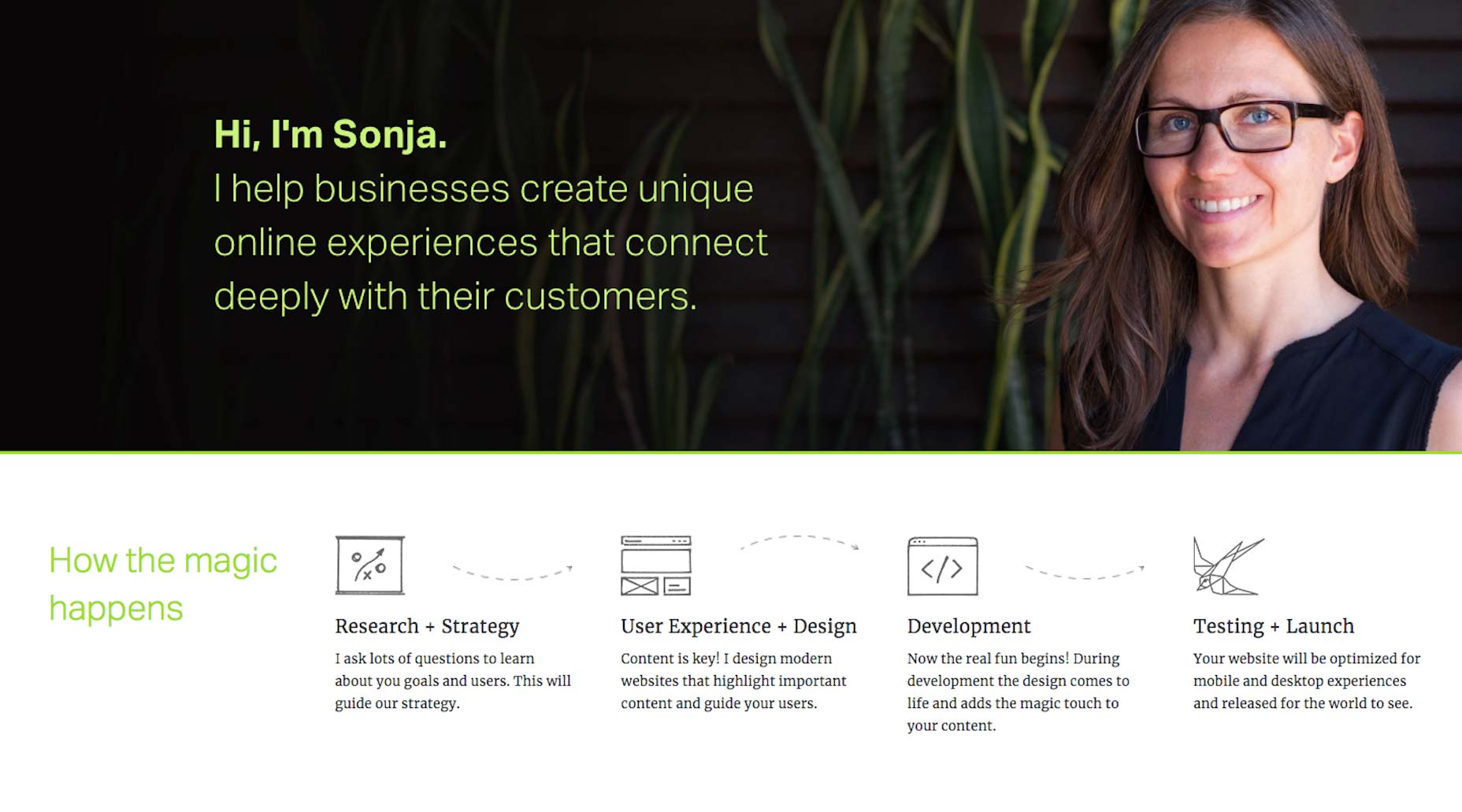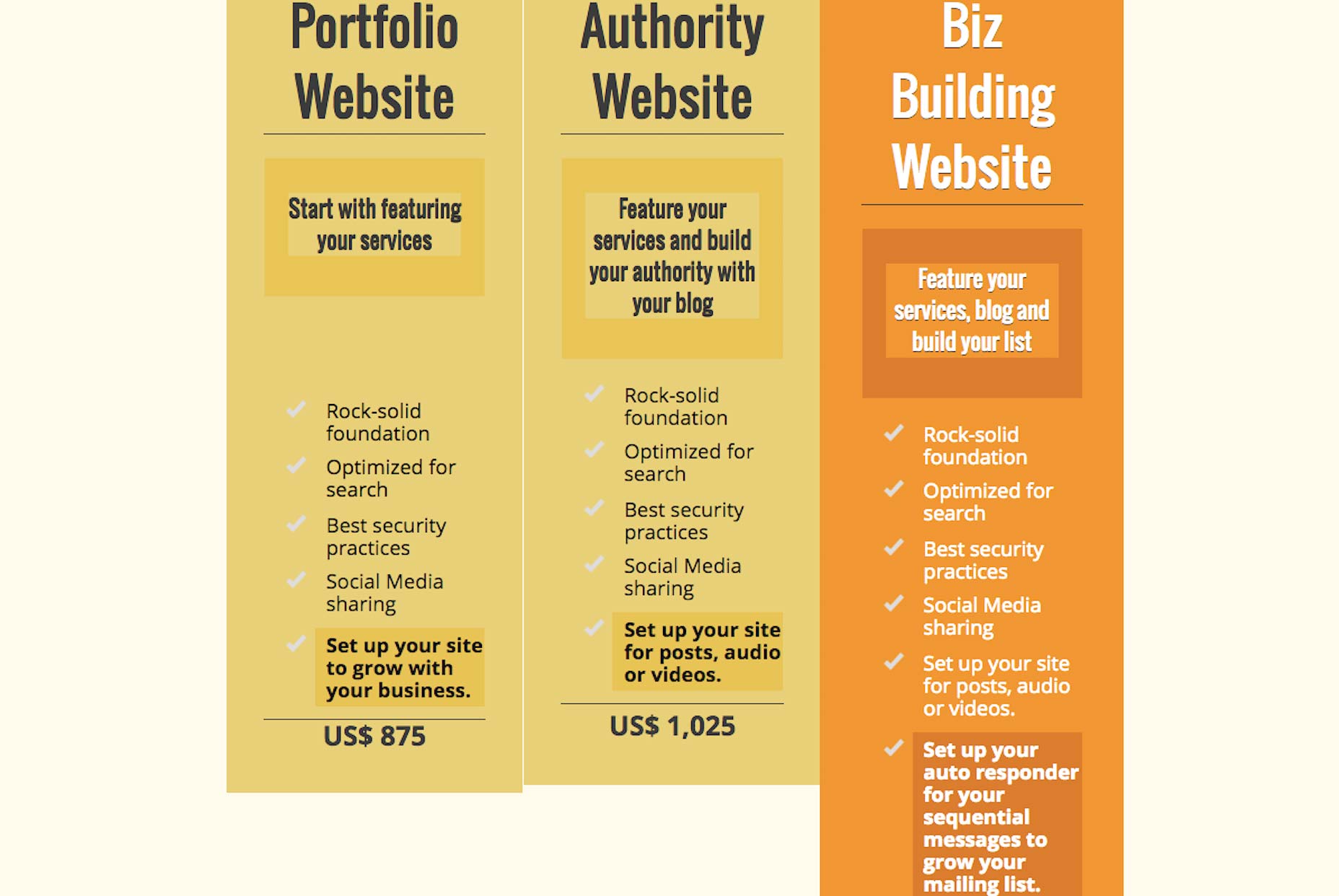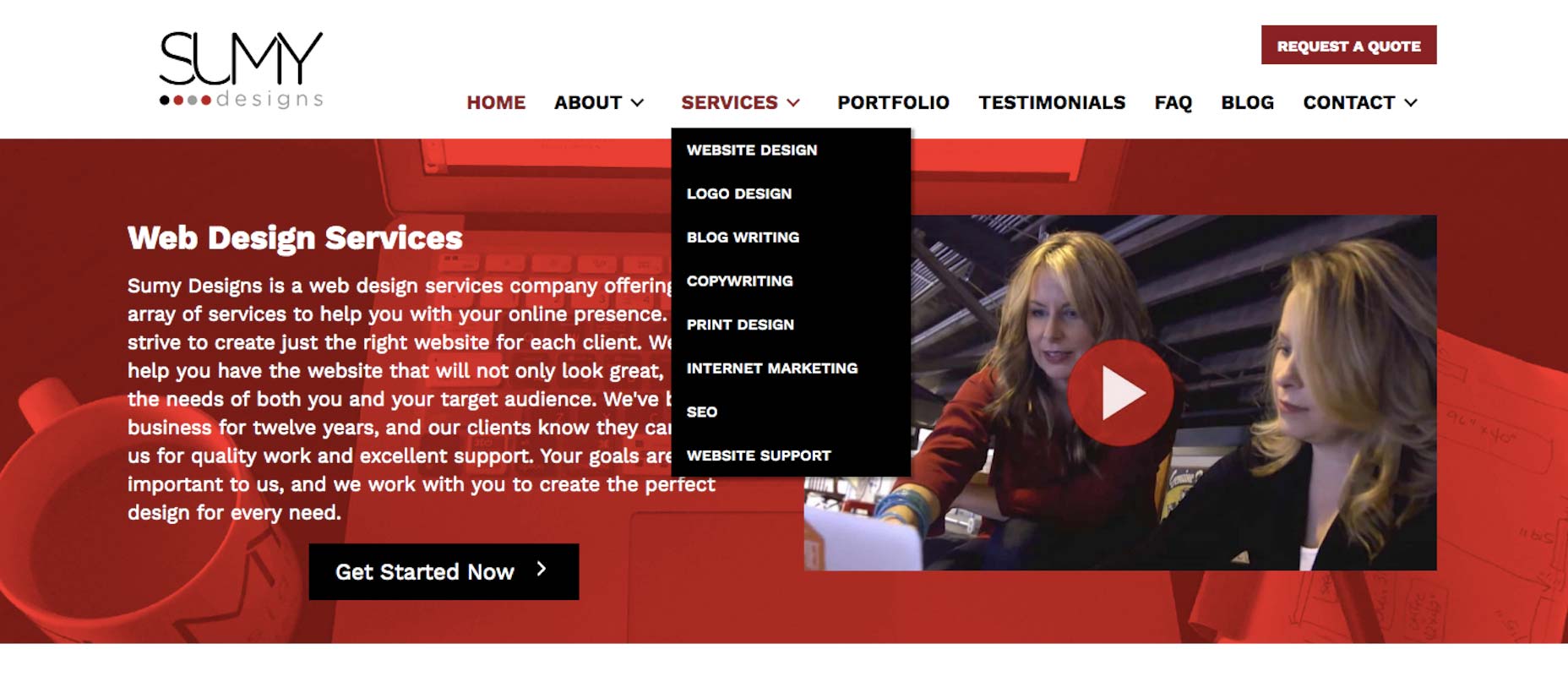
- A client continues to purchase the same service or product from you.
- A client is willing to be upsold or cross-sold on other services or products you offer.
- A client regularly refers others to your business.
7 Ways to Build Loyalty with Your Web Design Clients
In order to build loyalty with web design clients, you have to first figure out what they value most. This will differ from client to client, and industry to industry. However, these 7 ideas should get you thinking about how this could work for your business.1. Handle the Initial Project Like a Pro
The work you do on a first-time project will lay the groundwork for any future relationship you have with the client, so make sure your process is refined and your service/solution is the best it’s ever going to be. Take a look at Sonja Leix’s process for a good example of this. Every base of the web design lifecycle is covered and well-explained.
For your own business, consider some of the following upgrades:
Every base of the web design lifecycle is covered and well-explained.
For your own business, consider some of the following upgrades:
- Create a client contract (if you don’t have one already) that covers every angle.
- Conduct thorough research into a client’s background before meeting and, again, before commencing work.
- Invest in a professional grade project management and collaboration platform.
- Designs can go out of style fast, so always design with the future in mind.
- Specialize. If you don’t have a design specialty or industry of focus, get one. It’ll make you a more effective designer if you’re awesome at one thing instead of being okay at a few.
2. Communicate Like a Partner
From the very first interaction you have with a prospect to the very last you have with a current one, be ready to leave a positive impression. While I realize that can get tricky—especially as you enter feedback stages—always remember that: 1) you are here to create something your clients will love, and 2) you are the professional designer that knows best. If there happens to be a disconnect between what the client wants/loves and what you believe is the better course of action to take, the way you communicate may make all the difference in the world. The 215 Guys are a fantastic example of this. If their website is this straightforward, relatable, and welcoming, think about how smooth their communications and relationships are when they actually work with a client.
3. Anticipate Their Needs
Web design agencies aren’t the only ones that can create tiered design packages for clients. Freelance designers could and should be doing this too. After all, your clients aren’t all going to be the same size or have the same needs as everyone else. Why not anticipate those needs to by developing packages that account for those varying needs? Here’s an example from Tina Cook who is not only a web designer, but a marketer and coach as well. As you can see, her packages are also a great way to up-sell clients and also get them thinking about what she can do for them in the future.
As you can see, her packages are also a great way to up-sell clients and also get them thinking about what she can do for them in the future.
4. Offer Monthly Retainer Services
Even if clients didn’t think about what would happen after the completion of their project, you can bet they will quickly come to that realization once you’ve handed it off. Websites are a lot of work and not a lot of business owners, managers, or marketing executives have the time or know-how to maintain the design or create content; let alone do anything advanced like A/B testing. So, have those monthly retainer service packages well-defined and ready to share with those clients when they inevitably call you a month or two later with the following: “Can you just make this small tweak?” “Can you help me publish my blogs?” “I feel like there’s more we should be doing, but I’m not sure what that is. Help!”5. Offer Other Design Services
If you like the idea of having recurring monthly services to offer clients, but don’t want to do design tweaks and other support or testing-type services, think about using your design skills in other ways. For instance, you could design:- Fonts
- Icons
- Illustrations
- Infographics
- Blog visuals
- eBooks or white papers
- Email marketing templates
- Social media skins
- Branding elements
- Website templates

6. Commemorate Special Days
From the very get-go, pay special attention to the shared moments that are important to you and the client. Like when you completed your first project together. Or celebrating the anniversary of your partnership. Send them a small gift for each special occasion or simply give them a discount on the next month’s services. Take this time to show them you value them as a client and partner.7. Launch a Loyalty Program
Taking the last one a step further, think about launching a loyalty program. This means giving clients something extra—something that no one else has access to—in exchange for their continued loyalty. Some examples:- Lower pricing for signing long-term contracts.
- Free month of service in exchange for referrals.
- Discounted services when they try something new you’re about to launch.
- Monthly rebate for paying each invoice by the 10th.
- Free hour of support each month for filling out survey.
Focus on Loyalty
If you haven’t focused too much on generating longer-term relationships with clients by building loyalty, it’s not too late to start. Focus on creating opportunities in which you give them even more reason to trust you and to prefer your services above all others. If you can regularly give them something of value, you’ll find that they’re more willing to keep working with you or, at the very least, refer others to you.Suzanne Scacca
Suzanne Scacca is a freelance writer by day, specializing in web design, marketing, and technology topics. By night, she writes about, well, pretty much the same thing, only those stories are set under strange and sometimes horrific circumstances.
Read Next
3 Essential Design Trends, November 2024
Touchable texture, distinct grids, and two-column designs are some of the most trending website design elements of…
20 Best New Websites, October 2024
Something we’re seeing more and more of is the ‘customizable’ site. Most often, this means a button to swap between…
Exciting New Tools for Designers, October 2024
We’ve got goodies for designers, developers, SEO-ers, content managers, and those of you who wear multiple hats. And,…
15 Best New Fonts, September 2024
Welcome to our roundup of the best new fonts we’ve found on the web in the previous four weeks. In this month’s edition…
By Simon Sterne
3 Essential Design Trends, October 2024
This article is brought to you by Constantino, a renowned company offering premium and affordable website design
You…
A Beginner’s Guide to Using BlueSky for Business Success
In today’s fast-paced digital world, businesses are always on the lookout for new ways to connect with their audience.…
By Louise North
The Importance of Title Tags: Tips and Tricks to Optimize for SEO
When it comes to on-page SEO, there’s one element that plays a pivotal role in both search engine rankings and user…
By Simon Sterne
20 Best New Websites, September 2024
We have a mixed bag for you with both minimalist and maximalist designs, and single pagers alongside much bigger, but…
Exciting New Tools for Designers, September 2024
This time around we are aiming to simplify life, with some light and fast analytics, an all-in-one productivity…
3 Essential Design Trends, September 2024
September's web design trends have a fun, fall feeling ... and we love it. See what's trending in website design this…
Crafting Personalized Experiences with AI
Picture this: You open Netflix, and it’s like the platform just knows what you’re in the mood for. Or maybe you’re…
By Simon Sterne
15 Best New Fonts, August 2024
Welcome to August’s roundup of the best fonts we’ve found over the last few weeks. 2024’s trend for flowing curves and…
By Ben Moss















